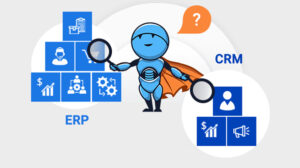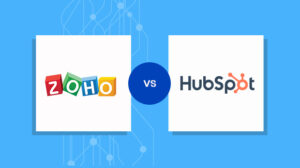Psychographic segmentation is a marketing strategy that involves dividing customers into groups based on their personalities, values, attitudes, interests, and lifestyles. This type of customer segmentation can be useful for understanding the motivations and preferences of different customer groups and targeting marketing efforts more effectively.
Some Common Decision Rules for Psychographic Segmentation
- Personality: This involves segmenting customers based on their personality traits, such as extroversion, openness, conscientiousness, and agreeableness.
- Values: This involves segmenting customers based on their core values and beliefs, such as environmental responsibility, individualism, community, and tradition.
- Attitudes: This involves segmenting customers based on their attitudes toward various topics, such as politics, social issues, and consumerism.
- Interests: This involves segmenting customers based on their interests and hobbies, such as sports, travel, and technology.
- Lifestyle: This involves segmenting customers based on their overall lifestyle, such as their income level, level of education, and family status.
Overall, the decision rules you use for psychographic segmentation will depend on the specific goals of your marketing campaign and the characteristics of your customer base.
Using Psychographic Segmentation in Marketing
To use psychographic segmentation, companies typically gather information about their target audience through market research methods such as surveys, focus groups, and online analytics. This information is then used to create profiles of different segments within the market, which can be used to develop targeted marketing campaigns.
For example, a cosmetics company might use psychographic segmentation to identify distinct groups within their target market, such as natural beauty enthusiasts, fashion-forward individuals, and busy professionals. By understanding the values and interests of each of these groups, the company can create marketing campaigns that speak directly to their specific needs and preferences.
Some common psychographic variables used in marketing include personality traits, values, attitudes, interests, and lifestyles. Companies might use a combination of these variables to identify different segments within a market and tailor their marketing efforts accordingly.
Overall, psychographic segmentation is a valuable tool for companies looking to reach and connect with their target audience more meaningfully. By understanding the values, attitudes, and lifestyles of distinct groups within a market, companies can create targeted marketing campaigns that resonate with their customers and drive business growth.
Psychographic Segmentation Examples
Here are some examples of how a company might use psychographic segmentation:
|
Brand |
Target |
Interest |
| Luxury car brand | Affluent, successful individuals | Status, exclusivity, advanced technology, high-end materials |
| Health food company | Health-conscious individuals | Sustainability, organic, non-GMO, locally sourced products |
| Travel company | Adventurous, culturally curious individuals | New experiences, personal growth, unique, off-the-beaten-path destinations, trekking, rafting, volunteering |
| Fashion brand | Fashion-forward individuals | Self-expression, staying up-to-date with the latest trends, unique, edgy clothing and accessories |
- A luxury car brand might target affluent, successful individuals who value status and exclusivity. This group might be interested in features such as advanced technology, high-end materials, and powerful engines.
- A health food company might target health-conscious individuals who value sustainability. This group might be interested in organic, non-GMO, and locally sourced products.
- A travel company might target adventurous, culturally curious individuals who value new experiences and personal growth. This group might be interested in unique, off-the-beaten-path destinations and activities such as trekking, rafting, and volunteering.
- A fashion brand might target fashion-forward individuals who value self-expression and staying up-to-date with the latest trends. This group might be interested in unique, edgy clothing and accessories that allow them to stand out from the crowd.
Also, read:
By using psychographic segmentation, companies can create targeted marketing campaigns that speak directly to the values and interests of their target audience, resulting in more effective marketing efforts and higher conversion rates.
Importance & Benefits of Psychographic Segmentation
Psychographic segmentation has become increasingly important for companies as consumers have become savvier and selective in their purchasing decisions. People are no longer just looking for products and services that meet their basic needs – they want to align their purchasing decisions with their values and identities.
One reason for the rising importance of psychographic segmentation is the proliferation of social media and the ability to customize content. Consumers are exposed to a vast amount of information and can filter out content that is not relevant to them. As a result, companies need to be more precise in targeting their marketing efforts to reach the right audience.
Another reason is the increasing focus on experiential marketing, where companies try to create an emotional connection with their customers. By understanding their target audience’s values, attitudes, and lifestyles, companies can create marketing campaigns that resonate with their customers on a deeper level.
Also, read:
Overall, psychographic segmentation allows companies to create more personalized and effective marketing campaigns that appeal to their target audience’s values and interests.
Psychographic segmentation can also be useful for companies looking to enter new markets or expand their product line. By understanding the values and lifestyles of different groups within a target market, companies can tailor their offerings better to meet the needs and preferences of those groups.
In addition, psychographic segmentation can help companies identify new growth opportunities. By understanding the values and interests of different segments within a market, companies can identify areas where there is a lack of competition or untapped demand.
Methods for Collecting Psychographic Data
There are several methods for collecting psychographic data, including:
- Zero party data: This is information that consumers voluntarily provide to a company, such as their preferences, interests, and demographics. It can be collected through surveys, registration forms, and social media.
- First party data: This is data that a company collects directly from consumers through their interactions with the company, such as purchase history, website behavior, and customer service interactions.
- Second party data: This is data that a company collects from a partner or affiliate, with the consumer’s permission.
- Third party data: This is data that a company collects from a third-party source, such as a data broker or public records.
- Social Media: Analyzing social media data can be a valuable way to gather psychographic data. By analyzing consumer posts, comments, and interactions, companies can gain insights into consumer interests, values, and lifestyle.
Applications of Psychographic Segmentation
There can be many ways in which psychographic segmentation is applied, including:
- Product development and positioning: Companies use psychographic segmentation to understand their target market’s preferences, needs, and values, which can inform the development of new products or services.
- For example, a company that produces outdoor gear may segment their market based on factors such as adventure level, outdoor activities, and perceived durability. This can help them create products tailored to specific sub-groups within the market, such as rock climbers or backpackers.
- Advertising and promotion: Companies can use psychographic information to tailor their advertising and promotion efforts to specific segments.
- For example, a company that sells luxury watches may target consumers who value status, success, and exclusivity, and advertise in high-end magazines, on exclusive websites, and at exclusive events. This can help to increase the effectiveness of their advertising and reach their target market more effectively.
- Sales and customer service: Companies can use psychographic information to train their sales and customer service teams to understand and communicate better with different segments.
- For example, a company that sells luxury cars may target high-income consumers who value status and success, and train their sales team to speak about the technical aspects of the cars and how they can be used to enhance the consumer’s status and success.
- Market research: Companies can use psychographic segmentation for to understand and predict changes in consumer behavior.
- For example, a company that sells clothing may use psychographic information to understand why some consumers prefer sustainable and ethically produced clothing, and how that preference is likely to evolve over time. This can help them to identify new opportunities and to anticipate changes in consumer demand. It can also be used to track marketing campaigns’ effectiveness and identify improvement areas.
Advantages and Limitations of Psychographic Segmentation
Advantages of Psychographic Segmentation Include:
- It allows companies to target specific groups of consumers who are more likely to be interested in their products or services
- It can provide insights into the motivations and decision-making processes of consumers
- It can help companies develop more effective marketing campaigns and messaging
Limitations of Psychographic Segmentation Include:
- It can be difficult and costly to gather accurate and comprehensive information about consumers’ psychological characteristics
- Consumers may not fit neatly into a single psychographic group, making it challenging to target them effectively
- It may be difficult to measure the effectiveness of marketing campaigns that use psychographic segmentation.
Psychographic Segmentation in eCommerce
Psychographic segmentation can be particularly useful for eCommerce companies looking to target specific groups within their market.
For example, a company that primarily sells outdoor gear to hikers and backpackers might use psychographic segmentation to identify a new target market of urban commuters who value sustainability and convenience. By understanding the values and lifestyles of this group, the company can design and market products such as bike racks and water bottles that appeal to their specific needs and preferences.
Some common ways that eCommerce companies might use psychographic segmentation include:
- Personalized email marketing: By segmenting their email list based on psychographic variables, eCommerce companies can send personalized emails that are more likely to resonate with their target audience.
- Customized product recommendations: By using data on customer values and interests, eCommerce companies can create personalized product recommendations for each customer, increasing the chances of a sale.
- Targeted social media advertising: By creating targeted social media ads based on psychographic variables, eCommerce companies can reach specific segments of their target market with more personalized and effective advertising.
Also, read:
Overall, psychographic segmentation is a valuable tool for eCommerce companies looking to reach and connect with their target audience more meaningfully.
eCommerce Case Studies of Psychographic Segmentation
Here are a few examples of how eCommerce companies have used psychographic segmentation in their marketing efforts:
- A fashion eCommerce company used psychographic segmentation to identify different segments within their target market, such as fashion-forward individuals, busy professionals, and natural beauty enthusiasts.
- A home goods eCommerce company used psychographic segmentation to identify different segments within their target market, such as busy professionals, families, and home design enthusiasts.
- A beauty eCommerce company used psychographic segmentation to identify different segments within their target market, such as natural beauty enthusiasts, busy professionals, and fashion-forward individuals.
- A pet supply eCommerce company used psychographic segmentation to identify different segments within their target market, such as pet owners who value natural and organic products, busy professionals, and families with young children.
- A sporting goods eCommerce company used psychographic segmentation to identify different segments within their target market, such as fitness enthusiasts, outdoor adventurers, and competitive athletes.
Conclusion
In conclusion, psychographic segmentation is an important piece of the larger puzzle of understanding and identifying your most profitable customers. To effectively use psychographic segmentation, companies need to have a strong data foundation in place that allows them to consolidate, organize, analyze, and act on their customer data.
At Saras Analytics, we understand the importance of data and have helped hundreds of brands to set up a solid data foundation. If you’re looking to improve your understanding of your customers and boost your bottom line, we’d be happy to help. Contact us today to learn more about how we can help you achieve your business goals.













